Salads once considered a mere side dish or a light lunch option, have evolved into a staple in American cuisine. Their versatility, adaptability, and ability to cater to a wide range of dietary preferences have cemented their place on menus and dinner tables across the country.
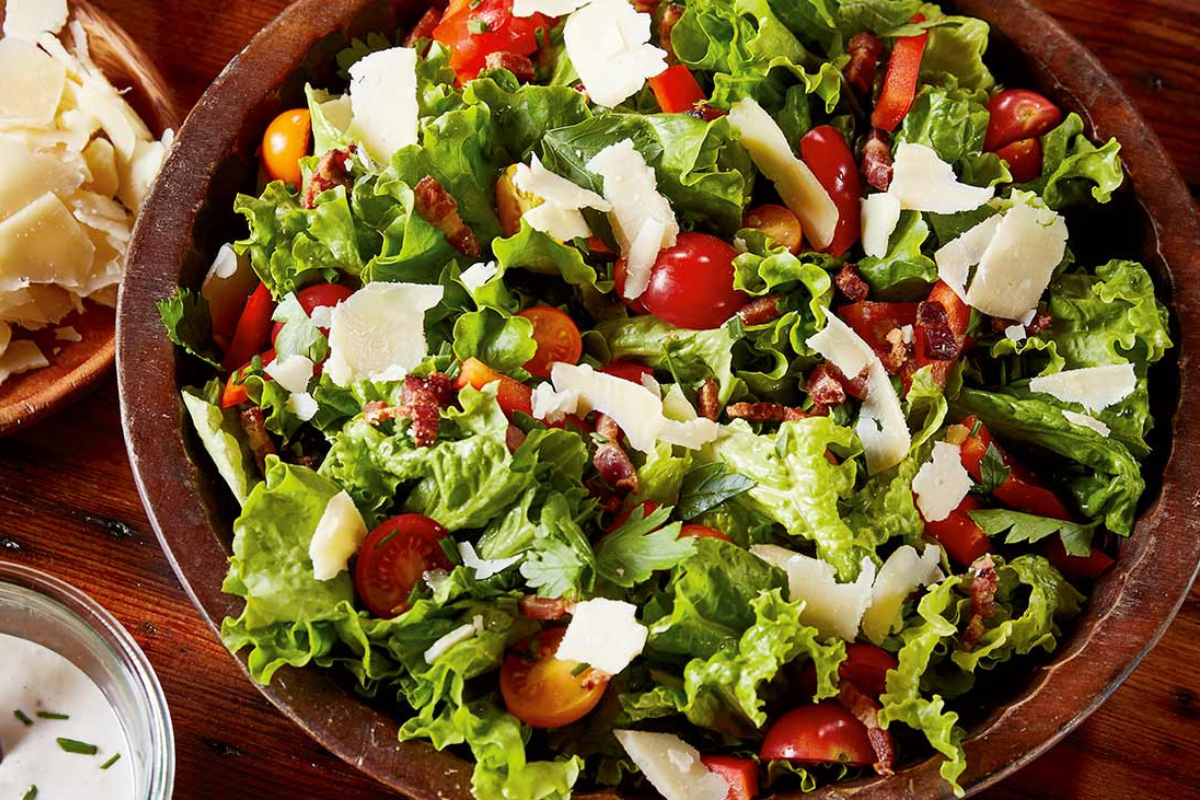
Photo: Wisconsin Cheese
The popularity of salads in America can be attributed to several factors. The growing emphasis on healthy eating and balanced diets has propelled salads to the forefront of culinary choices. Their versatility and adaptability have allowed them to cater to a wide range of dietary preferences, from vegan and vegetarian to gluten-free and low-calorie options.
Furthermore, salads have evolved beyond mere side dishes or light meals. Chefs have embraced salads as culinary canvases, experimenting with innovative ingredients, dressings, and presentations, transforming them into main course entrées, artistic creations, and culinary masterpieces.
Caesar salad: A culinary delight
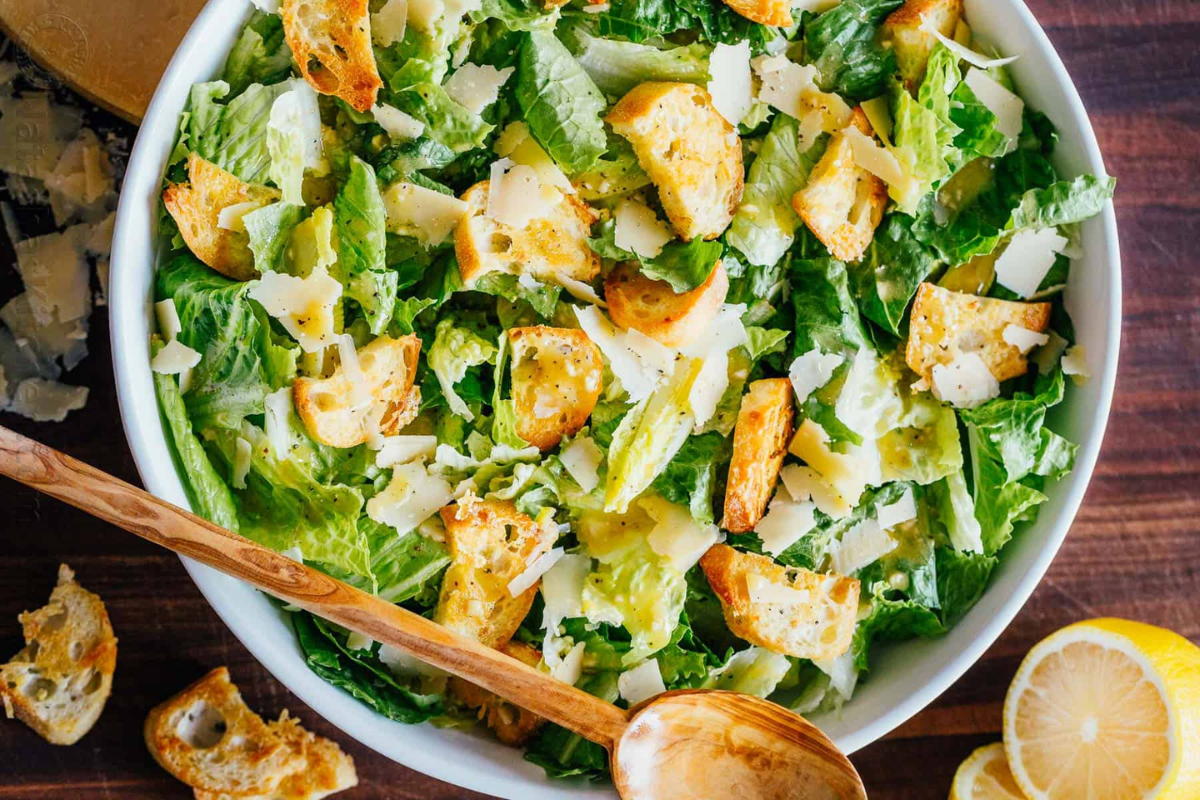
Photo: Natashas Kitchen
Emerging from the vibrant culinary scene of Tijuana, Mexico, the Caesar salad has ascended to global recognition, captivating taste buds worldwide with its symphony of textures and flavors. Its crisp romaine lettuce, creamy Caesar dressing, crunchy croutons, and savory Parmesan cheese have become synonymous with culinary excellence, earning the Caesar salad a place among the most beloved and enduring dishes in gastronomic history.
The Caesar salad’s charm lies in its simplicity and balance. Crisp romaine lettuce provides a refreshing foundation, while the creamy Caesar dressing, imbued with the tang of garlic, lemon juice, and Worcestershire sauce, adds a rich and umami-laden dimension. Crunchy croutons offer a delightful contrast of textures, and the savory Parmesan cheese sprinkles lend a final touch of salty indulgence.
The Caesar salad stands as a testament to the power of simple, well-crafted dishes to captivate and endure. Its harmonious blend of flavors, textures, and versatility has earned it a place among culinary icons, a dish that continues to inspire chefs and delight food lovers worldwide.
Cobb salad: A culinary delight of flavor and substance
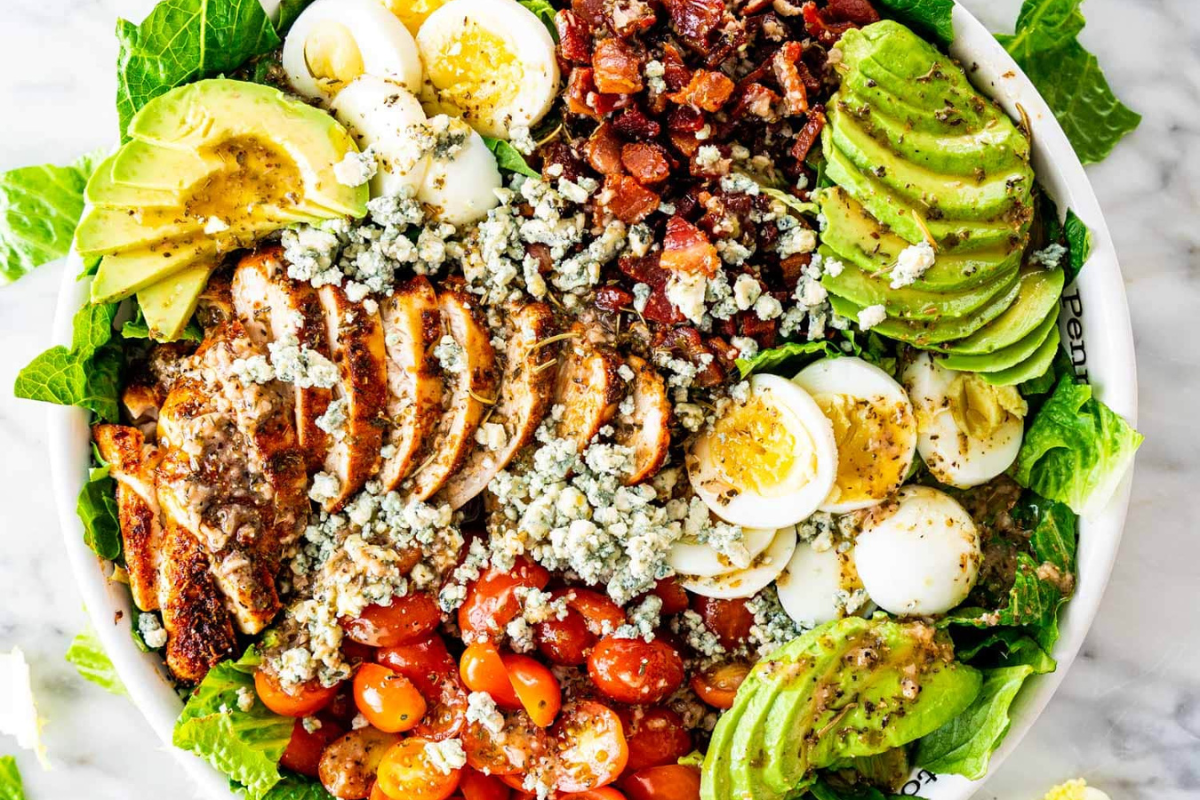
Photo: Jo Cooks
The Cobb salad stands as a culinary delight, a testament to the harmonious blend of hearty ingredients and bold flavors. Originating in the 1930s, the Cobb salad has ascended to the pinnacle of American cuisine, captivating palates with its symphony of textures and tastes.
At the heart of the Cobb salad lies a medley of grilled or roasted chicken, providing a satisfying protein base. Crispy bacon adds a delightful crunch and a savory dimension, while the creamy richness of avocado complements the other components with its velvety texture and subtle flavor.
The Cobb salad’s versatility extends beyond its core components, allowing for the addition of various ingredients to suit individual preferences. Tomatoes add a touch of sweetness and acidity, while cucumbers offer a refreshing crunch. Olives lend a briny and salty dimension, while nuts, such as walnuts or pecans, provide a delightful textural contrast.
The Cobb salad stands as a culinary delight, a testament to the power of bold flavors and harmonious combinations. Its enduring popularity is a reflection of its ability to satisfy both hunger and taste buds, making it a beloved choice among food enthusiasts worldwide.
Garden salad: A culinary canvas of simplicity and versatility
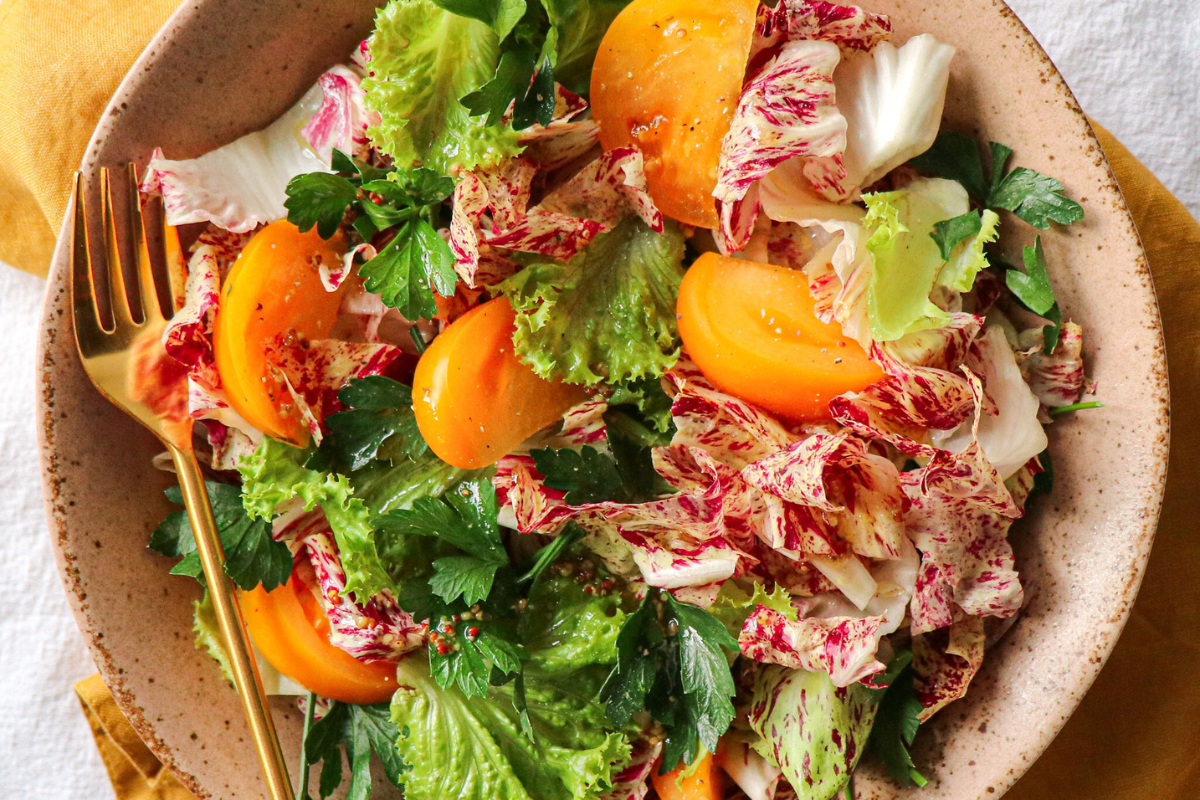
Photo: Everyday Allergen Free
In the culinary landscape, the garden salad stands as a beacon of simplicity and versatility, a testament to the enduring appeal of fresh, wholesome ingredients. Its foundation of crisp lettuce, typically romaine or iceberg, provides a refreshing canvas upon which chefs and home cooks alike can unleash their creativity.
The garden salad’s versatility shines through its adaptability to a wide range of dressings, each imparting a unique flavor profile. A classic vinaigrette, a harmonious blend of olive oil, lemon juice, and vinegar, offers a refreshing and tangy touch. For a creamy indulgence, mayonnaise-based dressings, such as ranch or Thousand Island, add richness and depth of flavor.
Beyond dressings, the garden salad welcomes a myriad of toppings, transforming it into a culinary playground. Sliced tomatoes provide a burst of sweetness and acidity, while cucumbers offer a refreshing crunch. Bell peppers, with their vibrant colors and subtle sweetness, add a touch of visual appeal and flavor complexity.
For added protein, grilled or roasted chicken, diced ham, or crumbled cheese can elevate the garden salad into a satisfying meal. Nuts, such as walnuts or almonds, provide a delightful textural contrast and a nutty richness. Croutons, either store-bought or homemade, add a satisfying crunch and a touch of indulgence.
The garden salad stands as a culinary canvas of simplicity and versatility, a testament to the enduring appeal of fresh, wholesome ingredients. Its adaptability to a wide range of dressings, toppings, and occasions has cemented its place as a staple in American cuisine, a culinary masterpiece that continues to delight and nourish generations of food enthusiasts.
Waldorf salad: A culinary symphony of sweetness, crunch, and sophistication
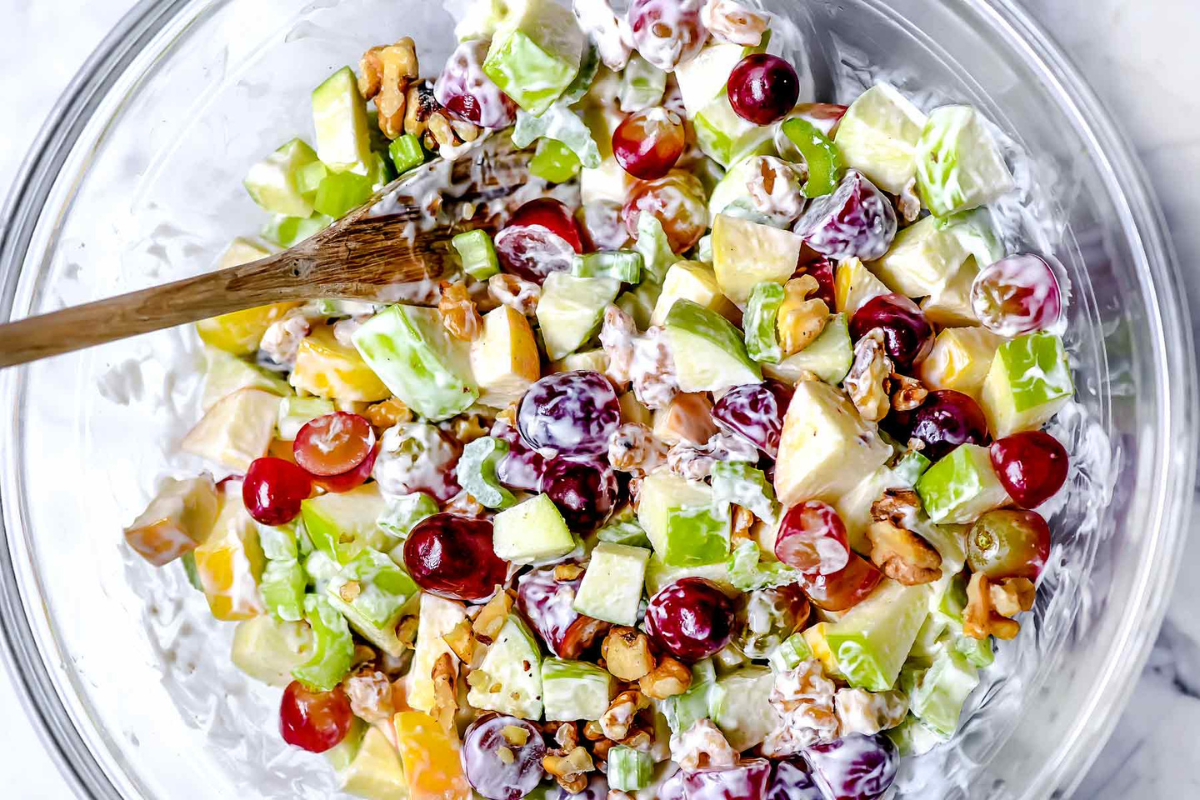
Photo: Foodie Crush
In the realm of salads, the Waldorf salad stands as a beacon of elegance and sophistication, a harmonious blend of sweetness, crunch, and refined flavors. Originating at the iconic Waldorf Hotel in New York City, the salad has captivated palates worldwide with its symphony of textures and tastes.
Sweet apples, nutty walnuts, and crisp celery dance together in a simple mayonnaise-based dressing, creating a culinary masterpiece that transcends time and trends. The Waldorf salad’s versatility allows for the addition of various elements, such as grapes or dried cranberries, to suit individual preferences.
Its elegant presentation, often served in chilled glass bowls, further enhances the salad’s sophistication, setting the stage for a delightful culinary journey. The Waldorf salad’s enduring popularity is a reflection of its ability to elevate the salad experience, transforming it into a refined and sophisticated culinary delight.
As American cuisine continues to evolve, salads are poised to play an even more significant role. Their versatility, adaptability, and ability to cater to diverse dietary needs will continue to drive their popularity. Chefs will continue to push the boundaries of salad creation, exploring new flavor combinations, textures, and presentations, further solidifying the place of salads as culinary staples in American cuisine.
In conclusion, salads have transcended their humble beginnings as mere side dishes to become a cornerstone of American cuisine. Their ability to adapt to diverse tastes, dietary needs, and culinary creativity has propelled them to the forefront of dining choices. As American cuisine continues to evolve, salads are poised to remain a culinary staple, offering endless possibilities for innovation and delight.

